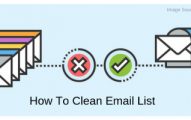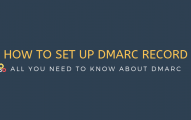
Before discussing on eCommerce Retargeting, do you know? Retailers spend great time trying to reach new customers. Building a customer base is crucial to online success. However, 92% of website visitors who visit for the first time don’t intend to purchase.
Many are left wondering how to make enough sales to survive if this troubling statistic is true. This was a more difficult problem in the past. However, technology has allowed merchants to reconnect with non-buyers even after they’ve left the site.
Online merchants have many options to reach potential customers and make sales. eCommerce Retargeting is a very popular ad type in the eCommerce industry. Despite the many engagement strategies available to retailers, it is easy to wonder why these ads are so effective. Let’s take an in-depth look.
What Is the Draw of eCommerce Retargeting?
Targeting customers who have already engaged with your brand can increase ad response by as much as 400%. This is because people might get attracted by something they know even more, no matter if it’s just recently seen.
About three-quarters of online buyers have seen ads for products they’ve searched on other sites. Even better, 11% of online buyers felt negative about retargeting ads. Online consumers were 59% indifferent to the ads, while 30% said they had a positive or very positive reaction.
This type of marketing is more comfortable for customers, and these ads convert 10x better than traditional display ads (0.7% vs. 0.07%). Retargeted marketing has a 60% increase in conversion rates for CPG company Kimberly Clark. Here are some fabulous ways to boost your conversion rates with your own ads.
1. Promote More Than Your Products
Retargeting is a common method used by eCommerce companies to market products to customers who have interacted with product pages. You can target more than just products. Inbound traffic is a growing tool that content marketing in eCommerce has.
You can use eCommerce Retargeting to drive traffic to your content. To attract people to your top-of-the-funnel content, such as a case study, blog post, or other downloadable, you can run retargeting ads. Be sure to exclude people who have already read the content.
I do not recommend creating new content. Instead, look at your analytics and choose something that is popular.
2. Target The Customers Who Don’t Open Emails
You can also use the same approach to people who haven’t opened your emails. This is a significant chunk of your subscribers for campaigns with an average open rate of around 24%. Even though the open rate is 43%, that’s still over half of the subscribers who haven’t seen your promotion. To remove the email-open barrier, upload the list of people who have not opened your emails. Send the message directly to them.
3. Target The Customers
Which Customers Open Specific Emails? Studies show that email marketing has a return on investment of an average of $38. That’s huge for eCommerce. However, not all customers will see your email. Industry-specific open rates can vary, but on average, it’s about a 24% open rate and a 4% clickthrough.
This is a large number of people who are missing your promotion. You can use Retargeting to send the same message via other channels. Although you might not have received the click-in email, you can still upload the segment list of emails opened to reach them again with a promotion. This is a great trick that works.
4. Set Up Exclusions Based On Time-on-Site Data
Your pixel data will include everyone who visits your site within the segments you have specified. You don’t want everyone to be in a particular segment. You should filter out people who only spend 10 seconds on your site.
Spend your retargeting budget only on those who contribute significantly to your bounce rate, but don’t spend time on your site for a long duration. These people are less likely to click on your ad. Although it takes some time to integrate this with Google Analytics, managing your audiences will significantly improve your ROI.
5. Double Up On Recapturing Abandonment
Average cart abandonment rates across eCommerce are 68%. This is a huge loss for a customer who was about ready to checkout. You can already recover some carts if you have automated cart abandonment emails.
They won’t all be caught, however. eCommerce Retargeting is a great way to get them back. To get customers and abandoned carts to check out again, you can upload the list and send them a special offer that they won’t resist. This is.
6. Target Content Marketing To Specific Site Activities
Segmentation is the key to eCommerce Retargeting. Instead of targeting everyone who visits your site, segment it. Split your visitors into different activities, for example, customers who have: Landed on specific pages in a category.
Added targeted products or wishlists to a cart, read your about page, or visited your contact pages. Deliver targeted ads with relevant content to these segments to ensure you get the right products and content to your target audience.
7. Exclude Customers Who Have Already Purchased
Between the moment you pull customer data and when your ads begin rolling, a lot can happen. Most likely, some of your customers will return to purchase again. Don’t send “come back for more” ads to people who have just completed. This could frustrate customers and waste your advertising budget. Instead, make sure to clean up your retargeting data before you run an ad.
8. Retarget Based on Price Sensitivity
High shipping costs and lower prices from a competitor are the top reasons eCommerce shoppers abandon their shopping carts. Millennials spend less on non-essentials than the previous generation and are more careful about what they spend.
With price-sensitive customers in mind, it is possible to win them back by targeting customers who have lost. Target customers who have left the site at a particular point, such as right after choosing shipping options. To get them back, offer discounts and/or free shipping. This is how it works.
9. Target Your Best Customers and Brand Advocates
An eCommerce platform should offer a wide range of reporting options, including customer and marketing reports as well as other analytics. Regularly query your customer data to identify which customers spend the most or who are spending most with you.
These customers could benefit from a simple retargeting campaign without having to accrue points. Offer them a discount for repeat purchases or an exclusive promotion. You can find out more.
10. Build Trust Through Faces—Even Familiar Ones
You’ve probably noticed that images featuring faces and real people are more popular on social media channels such as Instagram and Facebook. When creating your ad, take advantage of this. You can show some happy customers. If you are unable to get the images, ask your team.
Consider including a customer service representative, agent, partner, or manager in your retargeting ads if they are familiar to customers. Advertisements with a face or name can generate a lot more trust.
11. Cross-Sell New and Existing Products
There’s a chance that your products complement each other depending on what you sell. You can use your sales and customer data to create a target audience for specific products. Then, show them ads that relate to another product that compliments their purchase.
Be sure to always clearly communicate the product’s value in your ad. Show them how the purchase can be combined. This same strategy can be useful for a product launch. You can use Retargeting to promote a new product if it is significant in relation to an existing product.
12. Focus on Crafting Better Copy
It is clear that visual elements in a retargeting campaign are the most important. These are what will get consumers to stop scrolling. Even the most stunning images can be rendered useless if they’re accompanied by boring, repetitive copy.
Retargeting ads can only be a worthwhile investment if they have an impact on conversions. This goal can only be achieved by hiring an excellent copywriter. These individuals will help increase clicks and give shoppers the motivation they need to buy. Ad copy is a crucial part of a retargeting campaign. A compelling ad copy can drive conversions. It does three things.
It Captivates, Entices, and Excites. If these three factors are present, it is more likely that a brand will be able to successfully connect with a buyer and bring them back to the site to purchase. You can find out more.
13. Keep Your Retargeting Ads Fresh
Running the same ad copy with the same images over and over again is the fastest way to reduce the effectiveness of your targeted advertising campaign. Customers will quickly get blinded if they see the same ad everywhere. If they don’t like the ad, it won’t catch them again.
Advertising blindness (banner blindness) will result in them becoming blind to advertising. This is similar to how many people ignore speed limits signs and billboards on their way to work. It pays to test different versions of your ads to keep your audience interested. This is what you should do.
14. Use FOMO While Retargeting To Bump Last Minute Sales
When properly set up, retargeting ads can already deliver amazing conversion rates. However, there is always room for improvement. Using the FOMO (fear of missing out) techniques is one way to increase your conversion rates.
This tactic can be used with countdown times, last-minute deals, and limited-time offers. Your audience will be quite more inclined to purchase if they see something that interests them (dynamic retargeting) and if there is a last-minute discount. To increase urgency, you can personalize your ads with countdown timers. You can find out more.
15. Embrace Emotionality
Although it’s nice to think that rational people make rational decisions, we are actually highly emotional and make our choices based on these feelings.
This applies to both personal and business relationships, as well as buying behavior. Retailers should adopt the principles of emotional marketing to increase their retargeting campaign effectiveness. Emotional marketing is evident in the way retailers write product descriptions. They list the benefits that they receive rather than listing features.
This tactic works because it triggers emotions associated with personal benefits. Merchants should use emotionally charged language to get consumers to take action when retargeting ads. This goal can be achieved by leveraging the FOMO phenomenon.
16. Use Dynamic Retargeting To Show Them What They Love
Retargeting has a dynamic aspect that is great. Dynamic retargeting can be a great way to attract customers who are not interested in your products but love your brand. This is also among the leading reasons for cart abandonment.
Don’t forget to thank those who are actively engaged with your product pages. You can use Retargeting to show them products they like enough to visit. If they aren’t sure if they want to buy it, they will be more likely to purchase it again.
Final Thoughts
An eCommerce retargeting strategy that is well-executed can bring a lot of value to eCommerce retailers looking to promote their products to the right audiences. This ad type allows merchants to reach the most likely buyers. It is not easy to create a campaign that delivers the results you want.
Retargeting ads cannot be set and forgotten. They require constant monitoring, tweaks, and optimization to increase conversions. Although these tactics can be helpful for merchants in developing an eCommerce retargeting strategy that works, it is often difficult to master.
Visitor’s eCommerce professionals can help retailers achieve optimal results quickly. We can assist in creating a retargeting campaign that targets the right customers with the message to ensure maximum retargeting performance.
Our Experts at ListCleaningAdvice keep on sharing ultra-helpful tips in the email marketing domain with you. Ensure you stay in touch with our blogs. Our main target is to keep your email marketing campaign safe and make it successful. We list the most amazing email validator services on our page, and we’ll pridefully invite you to have a look HERE.


